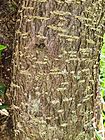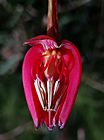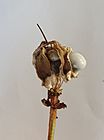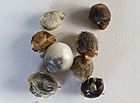Crinodendron hookerianum facts for kids
The Chilean lantern tree (scientific name: Crinodendron hookerianum) is a beautiful evergreen tree. It belongs to the Elaeocarpaceae family. This tree is special because it only grows in Chile. You can find it in wet, shady spots near streams.
Quick facts for kids Crinodendron hookerianum |
|
|---|---|
 |
|
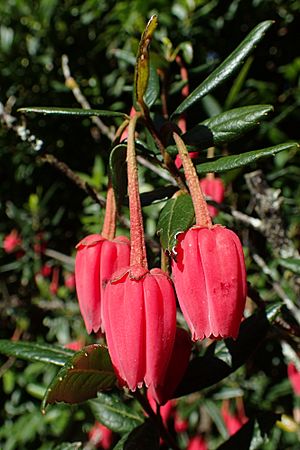 |
|
| Scientific classification | |
| Genus: |
Crinodendron
|
| Species: |
hookerianum
|
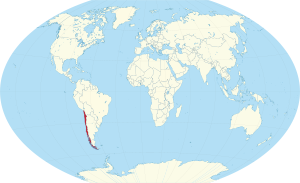 |
|
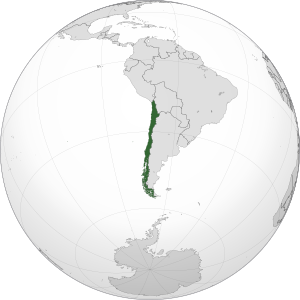 |
|
| Distribution of Crinodendron hookerianum (South-Central Chile) | |
| Synonyms | |
|
|
Contents
What's in a Name?
The scientific name Crinodendron comes from Ancient Greek words. "Krinon" means "lily" and "dendron" means "tree." This name was inspired by another lily-like tree, Crinodendron patagua.
The second part of the name, hookerianum, honors William Jackson Hooker. He was an English botanist who studied many plants from Chile. There are only four species in the Crinodendron group.
Other Names for This Tree
In Chile, this tree has many local names. The most common one is chaquihue (say it: 'chaki-way'). This name comes from the native language of the Mapuche people.
Other names include "chequehue" and "chaquehua." Some Spanish names are polizón (meaning 'stowaway') and patagua roja. "Patagua roja" means "red patagua," because its flowers are red. The original "patagua" is a white-flowered tree also found in Chile.
What Does It Look Like?
The Chilean lantern tree can be a shrub or a small tree. It can grow up to 8 meters (about 26 feet) tall. Its trunk can be as wide as 30 centimeters (about 12 inches). The bark is a grey color, like ash.
Its leaves grow in an alternating pattern. They are shaped like spears with jagged edges. Each leaf is about 4–7 cm long and dark green on top. The underside is a whitish-green and feels a bit hairy.
The flowers are usually pink or red. They hang down like little lanterns. Each flower has five petals that look like a bell. Inside, there are many stamens, which are the parts that make pollen.
After the flowers, the tree grows a fruit. It's a white, fuzzy capsule with 3 to 5 sections. Inside, you'll find shiny, oval-shaped seeds.
Growing This Tree
The Chilean lantern tree was first brought to the United Kingdom in 1848. This was done by a plant collector named William Lobb. People love to grow it because its unique flowers make it a beautiful ornamental shrub or small tree. It has even won an award for being a great garden plant!
This tree grows best in rich, moist soil that drains well. It likes a little shade, especially if the weather is very sunny. It also needs a place that is protected from strong, cold winds. It can handle temperatures down to about -7 °C (19 °F). However, young branches and flower buds can be damaged by hard frosts. This is because the flower buds start forming in the autumn and grow slowly through winter.
You can find this tree growing in places like Scotland, especially where the Gulf Stream keeps the climate mild. It also does very well in the mild areas of Cornwall and Devon in the UK. In Ireland, it thrives in counties like Cork and Kerry. You can also grow it in a cool greenhouse, where it might flower earlier.
Usually, you only need to trim dead branches in late spring. But in milder areas, you can even prune it to create a wind-break. New plants can be grown from cuttings taken in early or late summer. This tree generally doesn't have many problems with pests or diseases.
See also
 In Spanish: Chaquihue para niños
In Spanish: Chaquihue para niños


